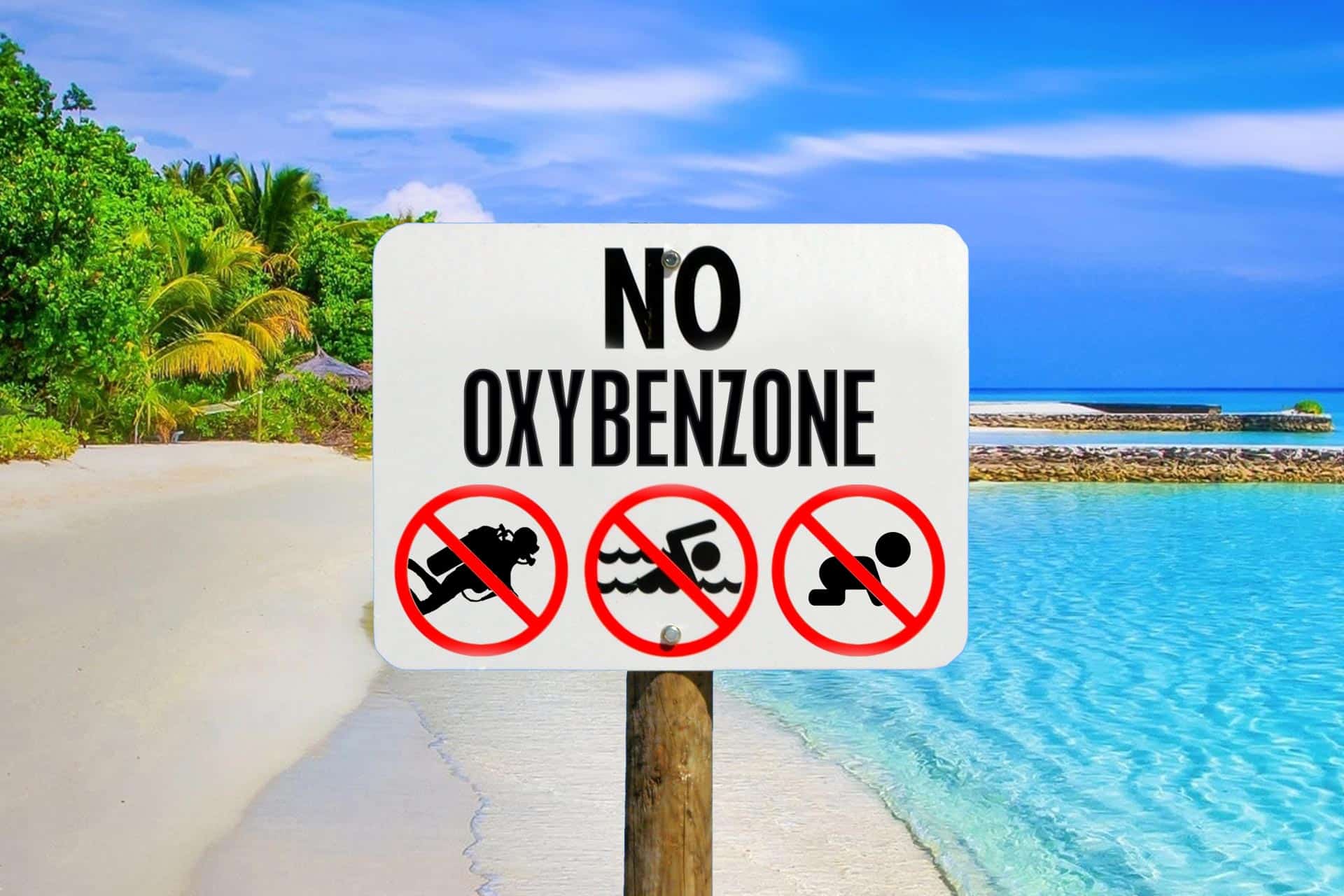What is sunscreen?
Sunscreen is a cream or spray/gel product that contains sun protection factor and chemical compounds that help build a protective barrier on the skin after only 10 - 20 minutes of application.
Sunlight contains many ultraviolet rays such as UVA/UVB/UVC… which have a negative impact on the skin. It is the cause of dark spots, increased skin pigmentation, wrinkles, dryness and rapid aging… At that time, sunscreen with SPF (Sun Protection Factor) and PA (Protection Grade of UVA) index acts as a barrier to protect the skin from the attack of sunlight.
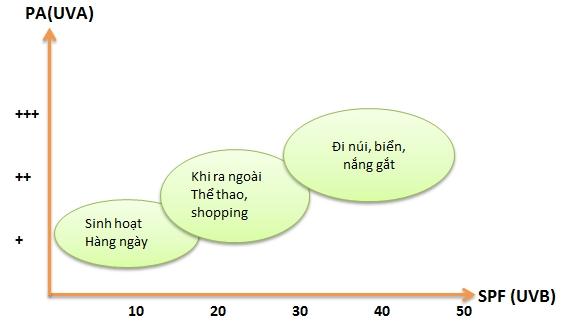
Sunscreen indexes (Internet photo)
There are two types of sunscreen: physical sunscreen (sunblock) and chemical sunscreen (sunscreen) with many synthetic chemicals that are not really good for health and the environment. Many scientists warn that the chemicals in sunscreen penetrate the skin, causing endocrine disorders or having negative effects on pregnant women. The sunscreen industry makes a lot of money from people's sun-avoidance habits, but at the same time, it also raises a big question mark about the level of safety and harmlessness to the skin, people and the living environment.
Sunscreen and the threat to marine life
In many countries around the world, the use of sunscreen when participating in beach activities, diving, swimming is now restricted or banned. Some states in the US have issued this ban, notably the state of Hawaii. Nearby, Palau is also recorded as the first country to ban people who apply "toxic" sunscreen when going to the beach. Most recently,Thailand, with a ban on the use of sunscreens containing chemicals that are toxic to corals in all national marine parks. The ban takes effect on August 4.
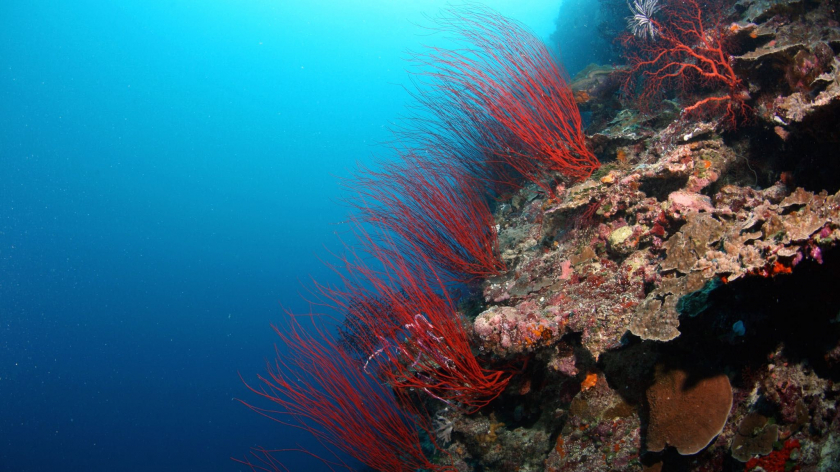
Beautiful natural coral reefs in Palau - Pacific Ocean (Internet photo)
Marine life including coral reefs, jellyfish, and starfish near the shore will be most affected. Especially young corals, they grow very slowly and will stop growing if hindered by chemicals or physical impact.
According to Dr. Craig Down - an expert in researching the impact of sunscreen on marine life, "Oxybenzone is the worst agent among the 10 banned chemicals. It causes mass coral deaths at low temperatures, reducing their resistance to the environment."
The doctor added that young coral branches are more seriously damaged when exposed to sunscreen than old coral branches. When young coral cannot grow, only old branches remain, all will quickly disappear and the future may not have natural coral reefs.
It is estimated that more than 13,000 tons of sunscreen washes into coral reefs every year. Thousands of those tons can contain high levels of oxybenzone, which is not only harmful to marine life but also to humans.
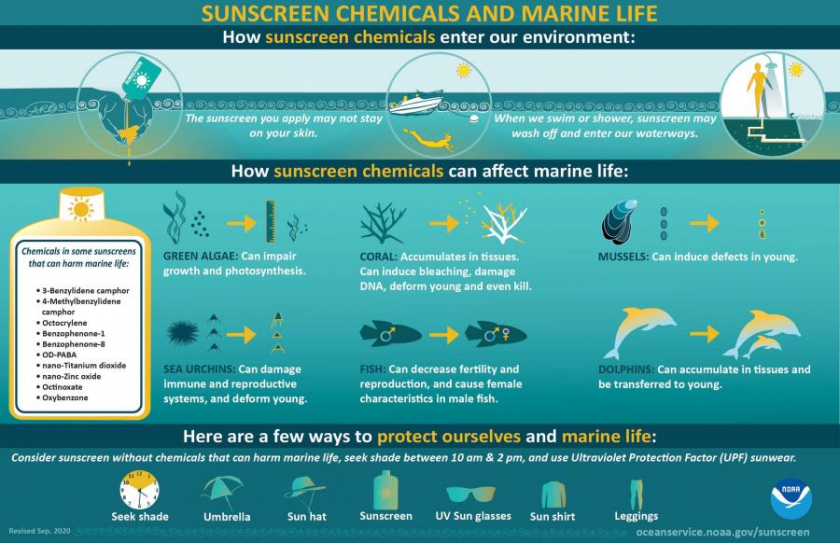
Description of the harmful effects of sunscreen (Internet photo)
Marine ecosystems in general are very rich and diverse. But with the speed of human development, this ecosystem is seriously threatened. Half of the corals have disappeared and died in the past 30 years. Fish species living at higher sea levels are not spared. Are humans being too selfish with the natural ecosystem?
Solution for all
There is no need to wait until it is "banned" like other countries. In Vietnam, we can completely participate in saving the marine ecosystem by reducing and eliminating sunscreen right now when going to the beach or swimming in the sea. However, our skin still needs to be cared for and protected no less than other health factors. So, what is the solution for all?

A sign asking not to use sunscreen containing harmful ingredients in Hawaii (USA) (photo: Internet)
First, you need to eliminate all unsafe sunscreens that contain many harmful substances. Instead, choose a sunscreen cream/spray that contains benign ingredients, recognized and certified as safe for marine life.
Some benign sunscreens that do not contain harmful chemicals include La Roche-Posay, Blue Lizard, Aveeno...

La Roche-Posay is a cosmetic brand with ingredients that are harmless to the skin and the environment, and have been tested (Internet)
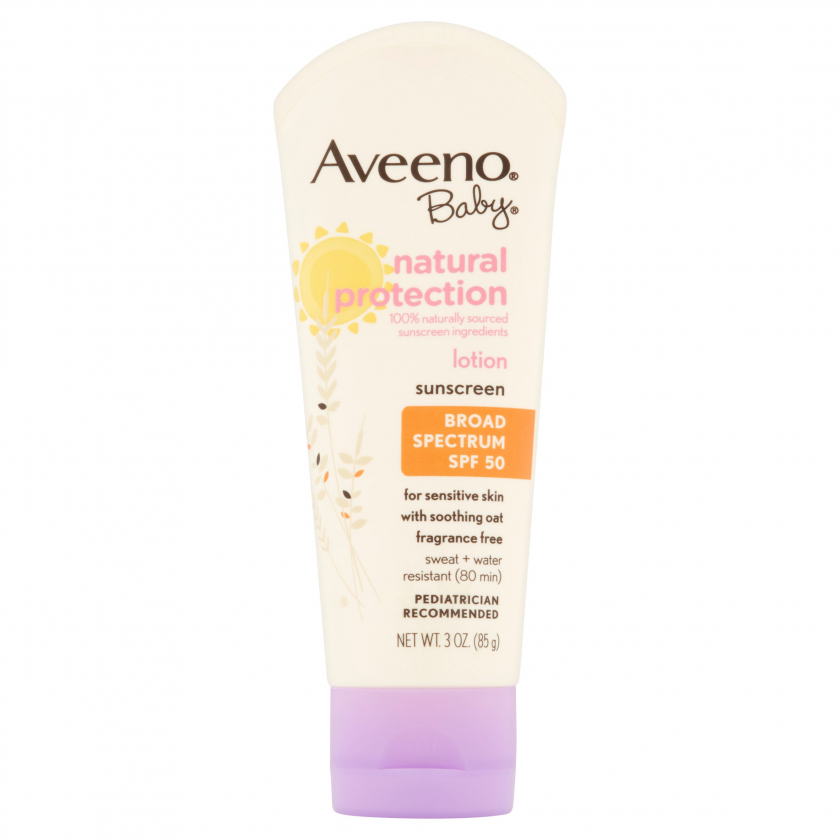
Aveeno has launched a sunscreen that is safe for the environment and can be used for babies (Photo: Internet)
Step two, you can use products to replace sunscreen cream/spray such as sunscreen pills, UV blocking pills, products that help increase the skin's protective barrier.
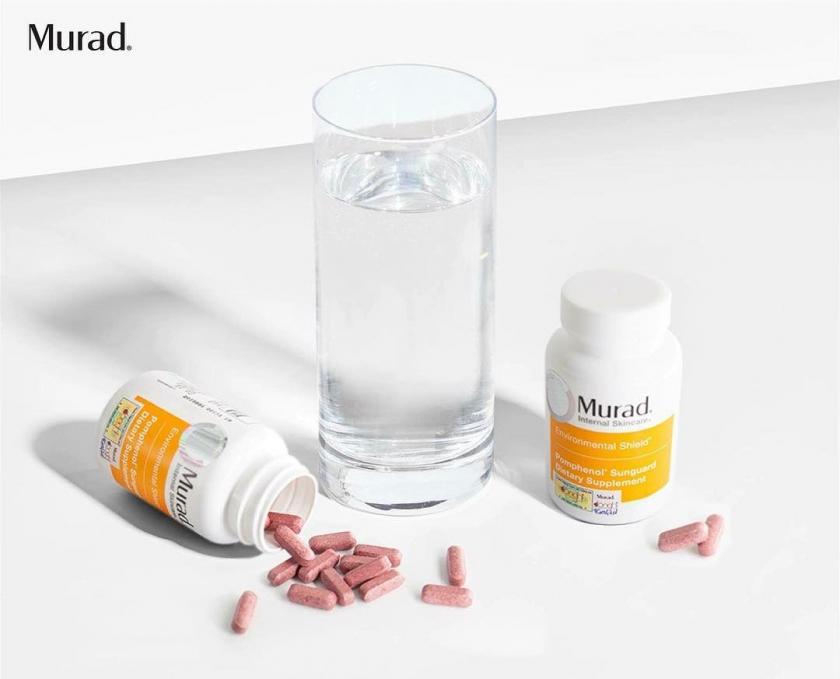
Murad internal sunscreen pills, with an average price from 1,500,000 VND (Photo: Internet)
Finally, be proactive in protecting yourself from the sun by wearing clothes designed to block UVA/UVB/UVC rays... and wearing masks, sunglasses, hats...
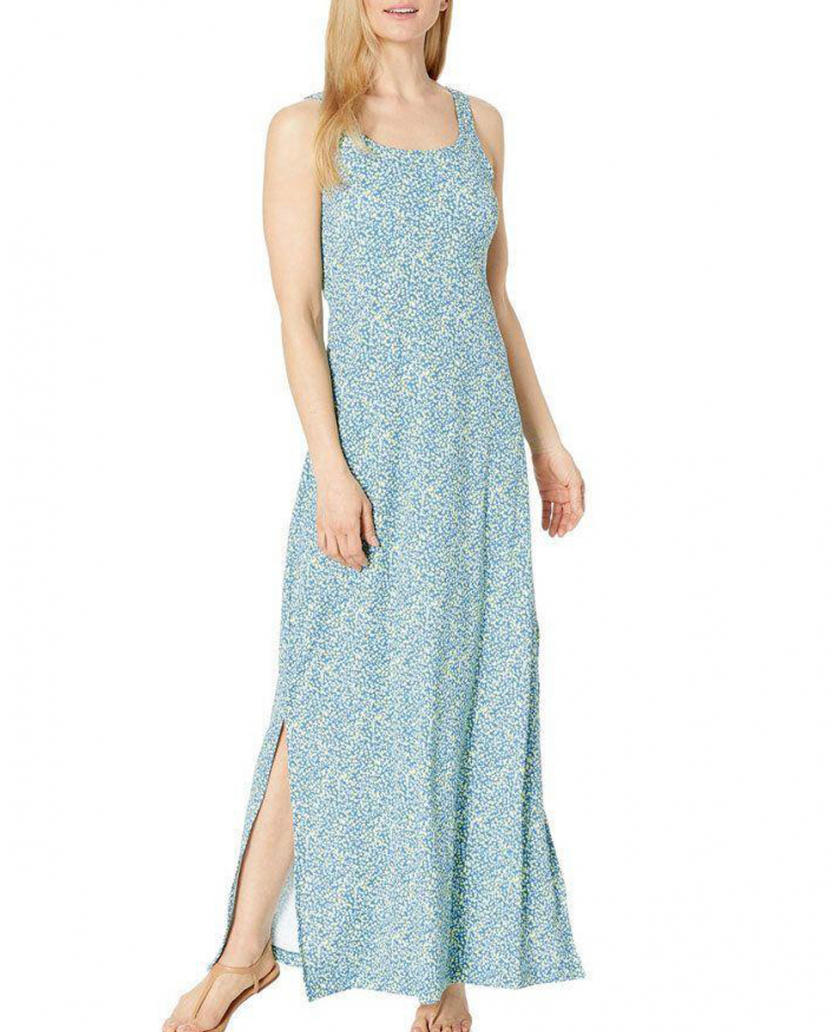
Columbia Freezer sun protection dress with UPF 50
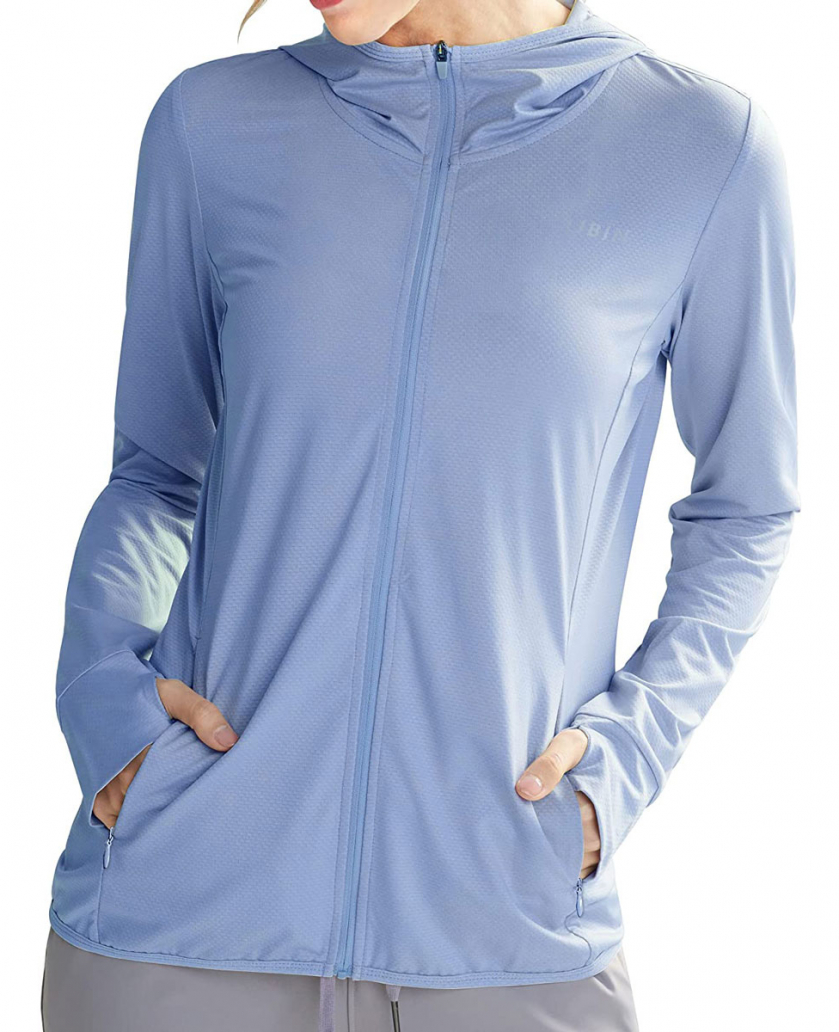
Libin sun protection shirt with UPF 50+
In addition to the above solutions to help your skin avoid negative environmental impacts, you can be more proactive by limiting your time at the beach during the times when UV rays are at their strongest (10am-3pm). With all of the above methods, the sun protection effect will be much more obvious and much higher than depending on a small bottle of sunscreen, leaving your skin red under the sun and, more deeply, silently affecting the Earth's marine ecosystem.
Conclusion
Even though society develops and personal problems are raised, it is worth paying attention to and protecting the living environment of other creatures. Because a balanced and healthy environment for all living creatures is the most ideal and livable environment.
But don't forget your skin! Because protecting your skin is not only for beauty, but also the foundation for our stable health.





